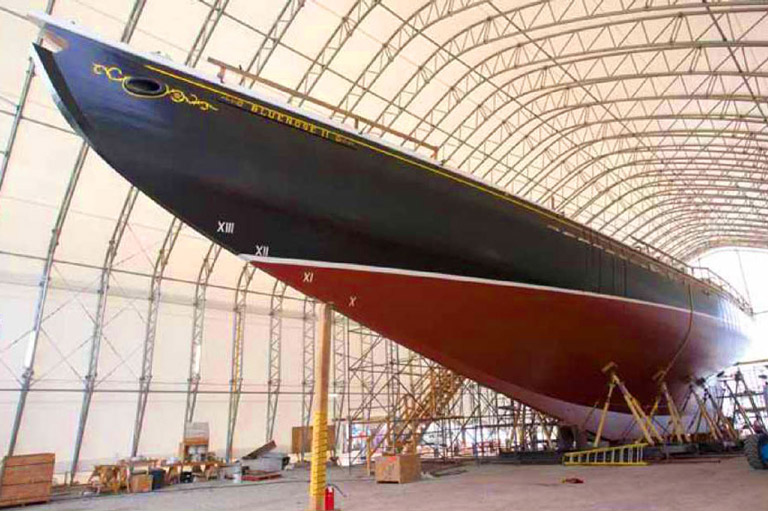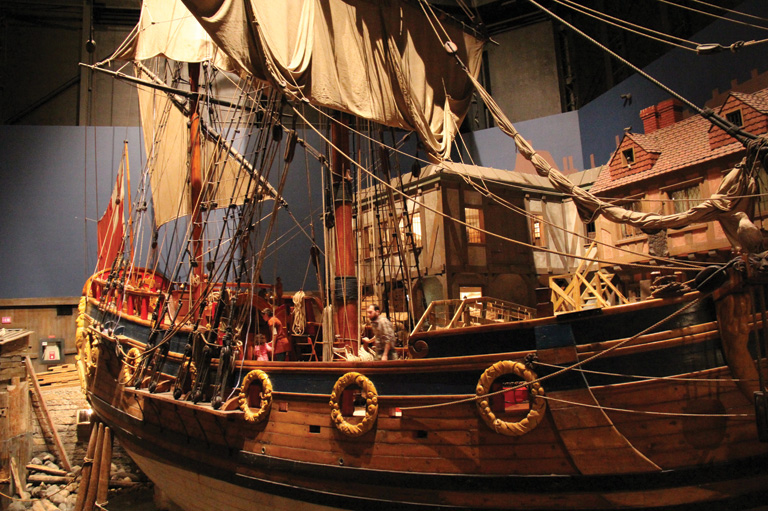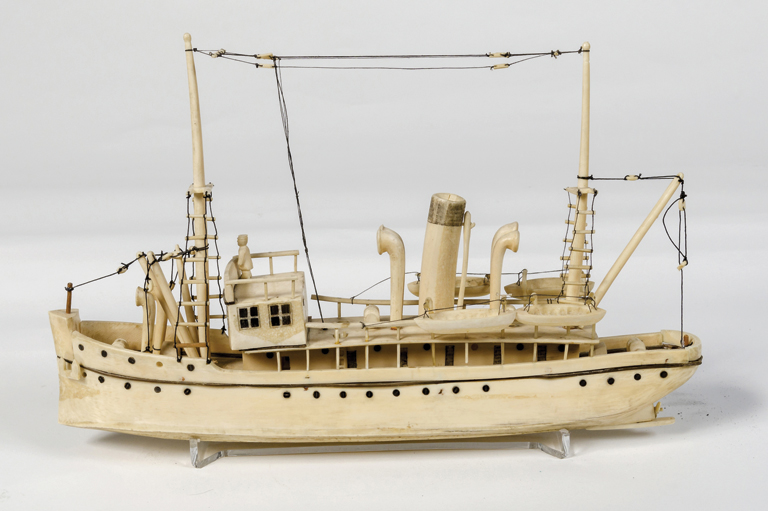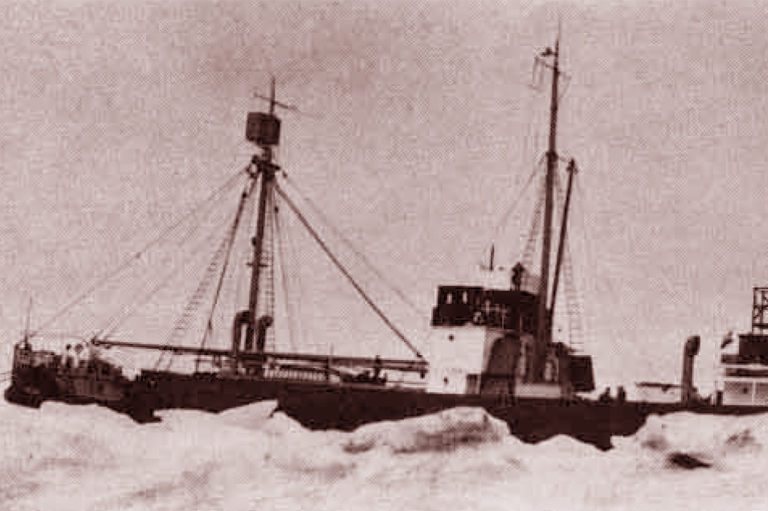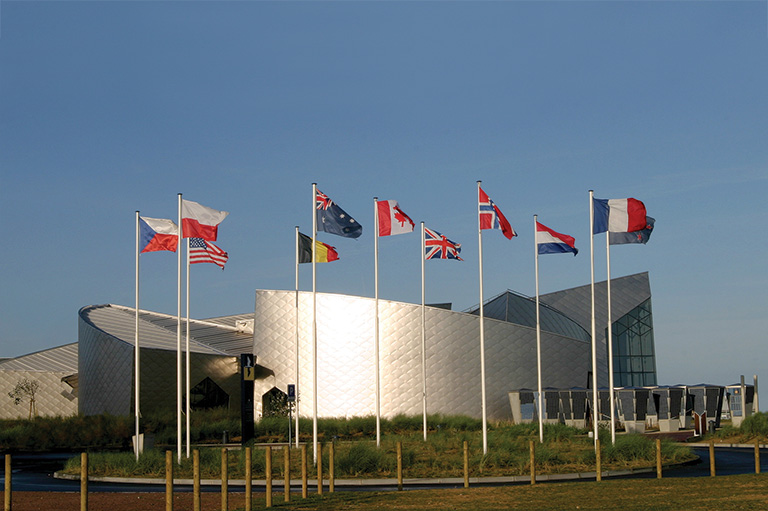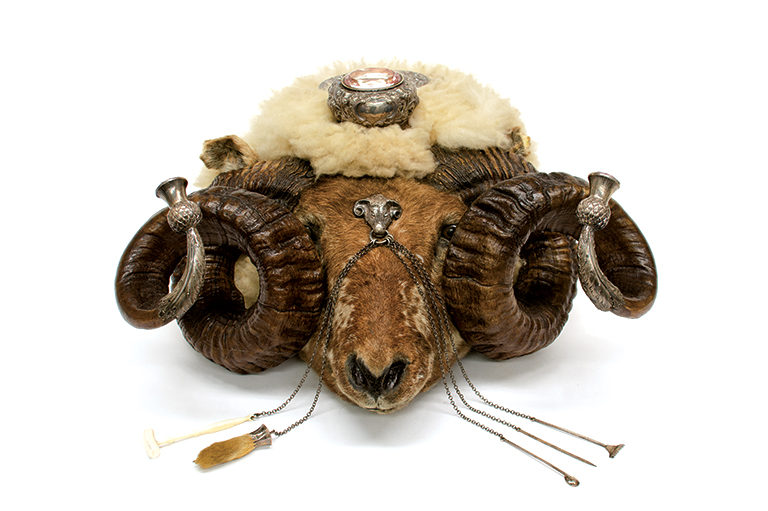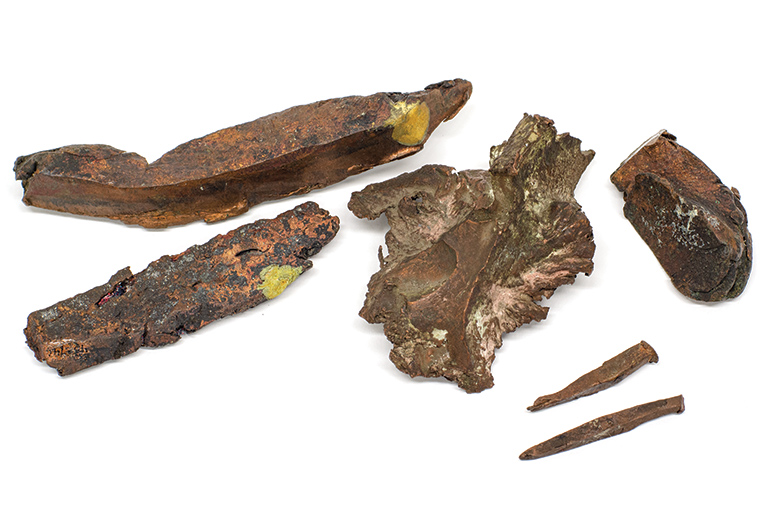Ship's Nameplate

This nameplate was hand-carved circa the 1940s by a crew member of RMS Nascopie, a 2,250-tonne Hudson’s Bay Company icebreaker that served northern outposts. The ship was designed and built in the United Kingdom at Wallsend on Tyne in 1911, and it was named for the Indigenous Naskapi people of Quebec and Labrador.
In 1921 the vessel delivered 550 reindeer from Norway to Baffin Island, N.W.T., in an attempt to provide meat and fur for the Inuit — a venture that ultimately failed. Like other HBC vessels, it was chartered during the First World War, when it was used as a supply ship for the French government. During the Second World War it shipped cryolite, used in aluminum manufacturing, from Greenland to Canada.
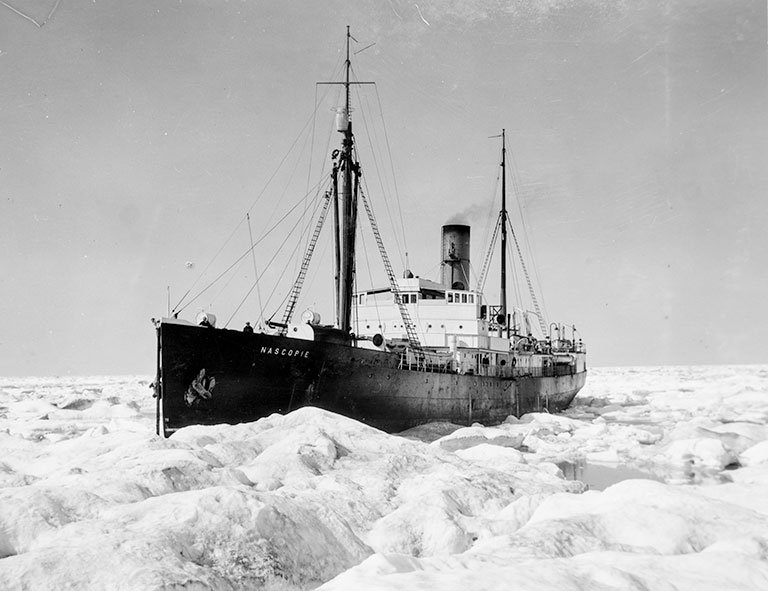
On July 21, 1947, the Nascopie hit an uncharted reef off Beacon Island near Cape Dorset harbour, in what is now Nunavut. The crew was evacuated, and crew member Bill Chase grabbed the nameplate as a souvenir (he wasn’t the only crew member who took home a piece of the Nascopie). Chase had been engaged by the HBC as an assistant steward on the ship for a short twenty days when it ran aground. On September 25 of that year, following damage sustained during a storm, the ship broke in two and the bow sank; the stern of the Nascopie sank on October 15, 1947, after another storm.
Themes associated with this article
Advertisement
You might also like...

Canada’s History Archive, featuring The Beaver, is now available for your browsing and searching pleasure!


